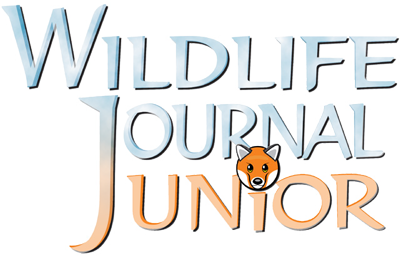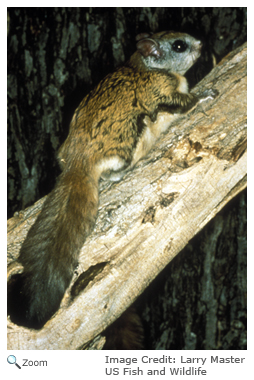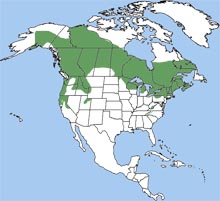Northern Flying Squirrel - Glaucomys sabrinus |
||||||||
Description
It has a loose fold of skin between its front and rear feet. When it stretches out its legs, this skin forms a kind of parachute that lets the squirrel glide from branch to branch. As it approaches its landing site, it pulls up, slowing its descent! When it is gliding, it uses its tail as a rudder to help it change direction. Range | HabitatThe northern flying squirrel lives in dense conifer or mixed conifer and deciduous forests. DietThe northern flying squirrel eats nuts, acorns, fungi, and lichens. It may also eat fruits, buds, sap, bird eggs, small nestling birds, and insects. Life CycleBreeding season runs from March to May. The female gives birth to two to five young after a gestation period of about 40 days. The nest can be an abandoned bird nest; a clump of twigs, moss, and shredded bark placed in the crotch of a branch; an abandoned woodpecker hole; or a tree cavity. The female cares for the young, who are weaned when they are about two months old. They learn to glide when they are about three months old. The female has one litter a year. BehaviorThe northern flying squirrel is nocturnal and is active throughout the year. It is a very social animal and may share a nest and live in groups of eight or more adults and juveniles. Two subspecies of the northern flying squirrel are endangered species in the United States. The Virginia northern flying squirrel (Glaucomys sabrinus fuscus) is found in Virginia and West Virginia and the Carolina northern flying squirrel (Glaucomys sabrinus coloratus ) is found in North Carolina and Tennessee |
|||||||


 The northern flying squirrel is found in Canada and the northern United States including Alaska, Washington, Oregon, California, Idaho, Montana, Utah, Wyoming, Minnesota, Michigan, and Wisconsin. It is also found in the Appalachian Mountains from New England through North Carolina.
The northern flying squirrel is found in Canada and the northern United States including Alaska, Washington, Oregon, California, Idaho, Montana, Utah, Wyoming, Minnesota, Michigan, and Wisconsin. It is also found in the Appalachian Mountains from New England through North Carolina.